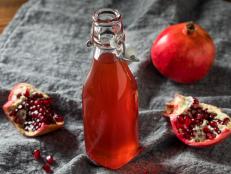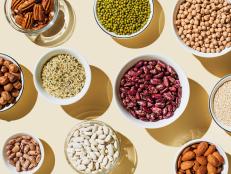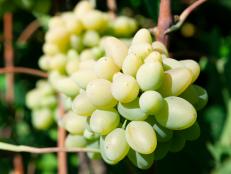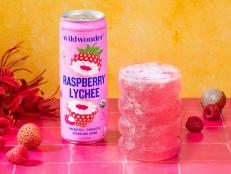Guide to Spices

Copyright Foodcollection /
Cinnamon
Cinnamon is a staple of baked goods like apple pies and oatmeal cookies. But it's also used in savory dishes, like Indian curries and Moroccan chicken, and it's a favorite for spicing up hot drinks like Mexican hot chocolate and mulled wine. As sticks, cinnamon can keep for two to three years, but ground cinnamon needs to be used more quickly. When buying ground cinnamon, look for the palest powders – they have the most flavor.
Vanilla
Vanilla is one of the most expensive spices, due to the exhaustive process of cultivating and curing the long thin pods. Vanilla beans are the fruit of a specific orchid, and the pods are cured for three to six months, drying in the sun and sweating in blankets, until they are shrunken, brown and fermented. Seventy-five percent of the world's vanilla comes from Madagascar. To use the beans, slit down the middle and scrape the seeds into foods. Vanilla extract is made by chopping vanilla beans and macerating with alcohol, so the flavor is drawn out. Don't be tempted into buying the much cheaper imitation vanilla – it's usually pure artificial flavoring with a chemical-like taste.
Peppercorn
Black pepper is a fundamental spice that is used around the world to season almost every savory dish. It grows in grape-like clusters on a pepper plant, the fruit dried to produce the familiar spice.
Peppercorns can be black, green or white, but the most common is the strongest flavored black peppercorn. Black pepper is usually added at the end of cooking to season a dish, but when added in larger amounts it has a bold flavor without too much heat. Green and white peppercorns are milder flavored. Resist the urge to buy a large container of pre-ground pepper – once ground it loses flavor quickly and is best used within four months.
Paprika
Paprika, commonly used as a garnish and to spice up foods, is a powder made by finely grinding different types of red pepper pods. Color and flavor vary from mild to hot and orange to red. Hungarian paprika is considered the best quality, and the spice is a staple of traditional Hungarian dishes. Pimenton, a type of Spanish paprika made from smoked peppers, has a distinctive rich flavor. Keep a couple types of paprika on hand to pump up the color and flavor of savory dishes.
Cayenne Pepper
A touch of spicy cayenne can add a lot of heat to a dish without radically changing the flavor. It is a mixture of ground, dried chili peppers and can be used with a wide variety of cuisines, particularly Italian and Mexican. Since it's always sold in the powdered form, it shouldn't be stored for longer than six months.
Red Pepper
Dried red chili peppers, sold either ground or in flakes, works well either added early to dishes that are going to cook for a while or simply shaken on near the very end. Because they can vary greatly in terms of heat, taste your red pepper to see just how hot it is — and make sure to replace it every six months.
Cumin
Cumin is mainly used in Middle Eastern, Asian and Mediterranean cuisines, and a common ingredient in curries and chili powders. The toasted seeds can be used whole in dishes or ground right before use. Pre-ground cumin loses its potency quickly, but can be resuscitated by a quick toasting in a dry skillet over medium-low heat.
Ginger
There are many ways to use this peppery root – fresh, dried, ground, pickled or crystallized. Each adds unique flavors and textures to dishes like stir-fries, roasted meats and ginger snaps. Fresh ginger should be hard and hefty, and stays fresh in the refrigerator for up to 10 days. It is usually peeled (try peeling with a soup spoon to easily get around the bumps), minced and added while cooking, but it can also be grated and squeezed for its spicy juice. Dried ground ginger is a favorite in many baked goods, but can be used to add a sweet, hot note to savory dishes as well. Since ground ginger has a different flavor from fresh, one should not be substituted for the other.
Nutmeg
Nutmeg, a close cousin of mace, has a flavor that's distinctive but can also fade into the background, adding warmth and depth while letting other ingredients stand out. Ground nutmeg is commonly used in cakes and desserts. It also makes an excellent addition to custardy dishes or on fruits and vegetables. For the most pronounced, nutty flavor, buy nutmeg whole and grind it as needed.
Allspice
With the sweetness and heat of cinnamon, cloves and nutmeg, allspice is common in the cuisine of the Caribbean, where it originated. It enhances the taste of most fruits and adds depth to the flavors of winter produce like pumpkins and squash. Ground allspice is available in most grocery stores, but whole dried berries are preferable, since they grind easily and keep in an airtight jar almost indefinitely. Try a pinch of ground allspice in ginger snaps or a baked ham, or make your own Jamaican jerk seasoning.





















































